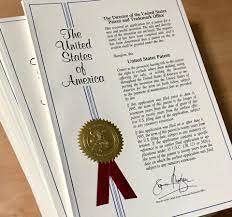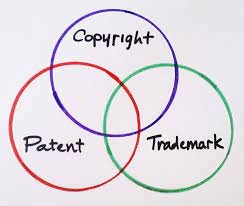
Understanding the Updated USPTO Guidance on Obviousness: A Closer Look
In a significant update from the U.S. Patent and Trademark Office, practitioners are provided with a refresher on the flexible approach to determining patent obviousness, as mandated by the Supreme Court's KSR decision. This newly released guidance not only clarifies the application of common sense in evaluating prior art but also emphasizes the importance of a broad perspective on analogous art and the motivations to combine different references. While not changing the law, the guidance offers a detailed framework that promises to refine how obviousness is argued and assessed in patent law.

Genericide: The Case of Kerosene
The case of 'Kerosene' highlights several key points about trademarks and their protection. It shows how a product name can become a victim of its own functional success, transitioning from a proprietary brand to a generic term as it becomes the standard reference for a particular type of product. Additionally, the story underscores the challenges faced in protecting a trademark when a product is pioneering in its field and its name is inherently descriptive of its function or composition.

Genericide: Transformation of Heroin
The case of "Heroin" presents a unique instance of genericide in trademark law, where the transition from a brand name to a generic term was influenced by factors beyond commercial success. Originally developed and trademarked by Bayer as a cough suppressant and a non-addictive alternative to morphine, "Heroin" was derived from the German word "heroisch" for its perceived potent effects. However, as the drug's highly addictive nature became evident, leading to widespread abuse and subsequent stringent regulation, the term "Heroin" evolved into a generic descriptor for the chemical substance diacetylmorphine, irrespective of the manufacturer.

Genericide: The Case of Murphy Bed
The story of the "Murphy Bed" showcases a unique aspect of genericide in trademark law, where a product's distinct functionality, rather than its widespread success, leads to its brand name becoming generic. Named after inventor William L. Murphy, the Murphy Bed was a space-saving innovation, allowing beds to fold into walls or closets, and became essential in compact living spaces. However, its unique functionality led to the term "Murphy Bed" being used generically for all similar space-saving beds, regardless of the manufacturer, ultimately leading to the loss of its exclusive trademark status.

Genericide: The Decline of Cellophane
The term "Cellophane" is a classic example of genericide in trademark law, where a distinct brand name becomes a generic term for a broad category of products. Originally a trademark of DuPont for a novel transparent and flexible packaging material, "Cellophane" gradually became the generic term for any similar transparent film. This shift in usage not only diluted the brand's distinctiveness but also played a pivotal role in a landmark legal case, underscoring the complex interplay between market dominance, brand recognition, and trademark protection.

Genericide: The Story of Zipper
The term "Zipper," once a specific trademark of the B.F. Goodrich Company, exemplifies the concept of genericide in trademark law, where a brand name evolves into a common term for a type of product. Initially trademarked for a fastening device on rubber boots, "Zipper" became synonymous with any similar fastening mechanism as the product gained widespread popularity in various applications. This broad adoption of the term in everyday language eventually led to the loss of its protected trademark status, demonstrating the delicate balance between brand ubiquity and trademark exclusivity.

Genericide: The Evolution of Linoleum
The transition from a distinct brand name to a generic term, a process known as genericide in trademark law, is a phenomenon that has affected several well-known brands, including "Linoleum." Originally a registered trademark for a unique flooring material invented in the 19th century by Frederick Walton, "Linoleum" has evolved into a generic term for similar types of floor coverings. This shift, driven by widespread consumer and competitor use of the term for any similar product, ultimately led to the loss of its trademark status, exemplifying the challenges brands face in maintaining their distinctiveness in the marketplace.

Navigating the Waters of Patent Enablement: Insights from Amgen v. Sanofi
The Supreme Court's decision in Amgen Inc. v. Sanofi emphasizes strict enablement requirements for patents, particularly in biotechnology. This landmark ruling underscores the need for detailed, replicable patent applications, impacting future patent drafting in the pharmaceutical sector. It highlights the critical balance between fostering innovation and ensuring public access to new discoveries, shaping patent strategies and legal practices to prioritize detailed enablement in support of collective knowledge advancement.

Genericide: The Transformation of Thermos
In the intricate world of trademark law, genericide presents a notable challenge, exemplified by the transformation of the term "Thermos" from a specific brand to a generic term. Initially a trademark of Thermos GmbH for their innovative vacuum flask, the word "Thermos" gradually became the default term for any similar product, regardless of the manufacturer. This shift in public perception and usage led to a pivotal legal decision in 1963, where "Thermos" was declared a generic term, highlighting the delicate balance between brand popularity and trademark protection.

Genericide: The Story of Escalator
The term "Escalator," once a trademark of the Otis Elevator Company, epitomizes the phenomenon of "genericide" in intellectual property. Originally coined to describe Otis's innovative moving staircase, the term gradually became a generic descriptor for all such staircases, transcending its proprietary origins. This shift was legally cemented in 1950 when the term was declared generic, a stark reminder of the fragile nature of trademarks in the face of widespread public adoption.

Genericide: The Case of Aspirin
The genericization of Aspirin had profound implications. For Bayer, it meant the loss of exclusive rights to a lucrative brand name. Competitors could now use the term 'Aspirin' for their own acetylsalicylic acid products, leading to a significant increase in competition

USPTO Updates Guidelines Regarding Computer-Generated Images and Compliance under 35 U.S.C. § 171
The United States Patent and Trademark Office (USPTO) has revised its guidelines to clarify the patentability of computer-generated images, including icons and GUIs. Emphasizing the integration of designs with an article of manufacture, this update aligns intellectual property law with technological advancements, providing clear guidance for innovators in the tech industry.

USPTO Director's Precedential Decision in Penumbra Case: A Key Shift in Patent Priority Standards
The USPTO Director has designated the Penumbra v. RapidPulse Inc. decision as precedential, signaling a major shift in patent priority standards.

What is Trademark Policing?
Trademark policing refers to the active and continuous monitoring and enforcement of your trademark rights. It involves taking legal action to prevent and stop others from using your trademark without your permission.

Understanding The Patent Prosecution Process
Securing your innovation's future is a journey that follows a carefully crafted patent prosecution timeline. It all starts with your invention disclosure, where your unique idea takes its first step towards protection.

Patents, Trademarks, and Copyrights - A Guide from Jones Intellectual Property
Understanding the differences between patents, trademarks, and copyrights is crucial for creators and businesses, as each type of protection serves a unique purpose in securing intellectual property rights.
